京版画 京都木版画工芸組合
KYO-HANGAWOODBLOCK PRINTS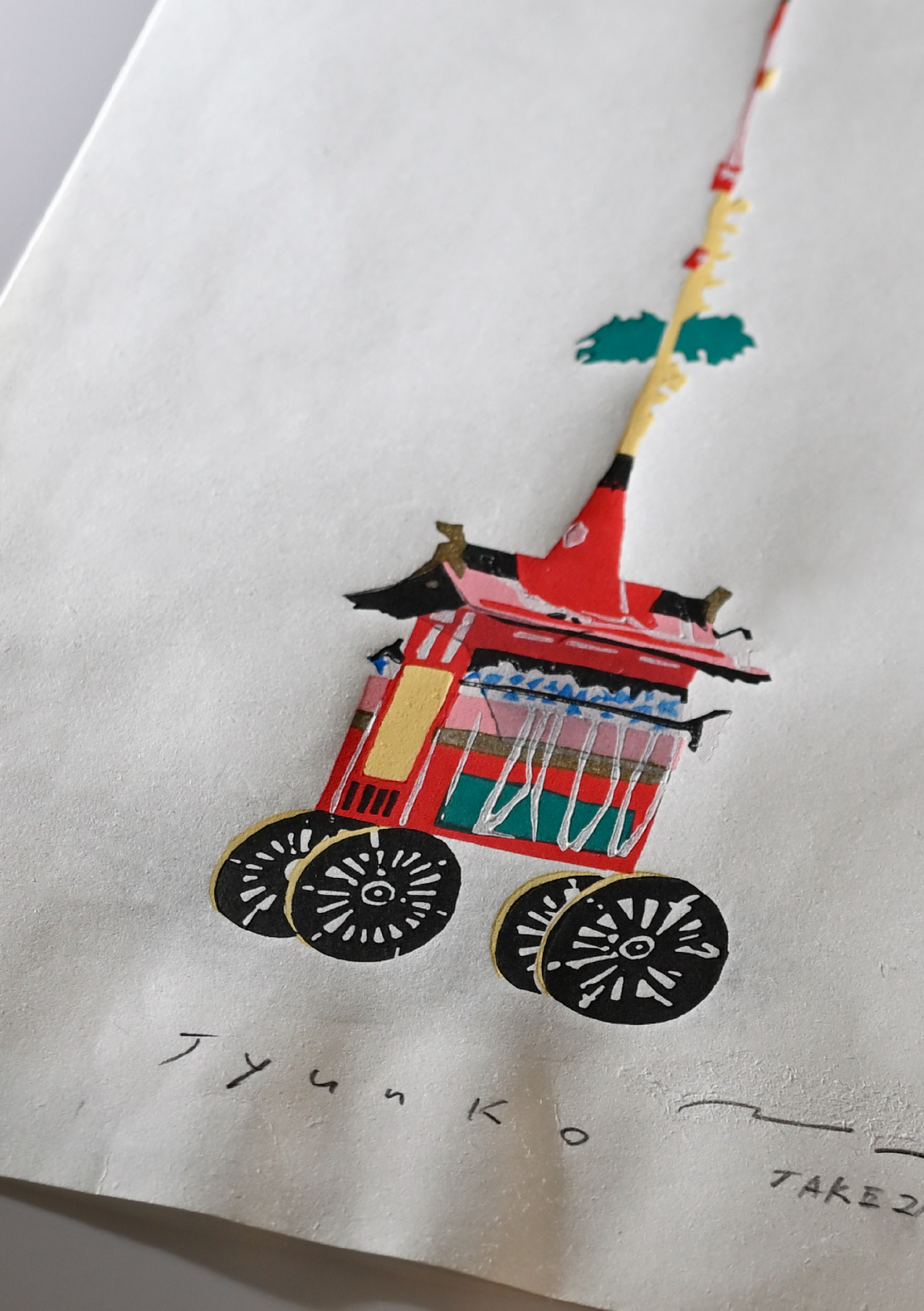 1
1
- 竹中健司「Junko」。
京版画の起源は、飛鳥時代(6世紀半ば)に百済(韓国)から仏教が伝来した際にもたらされた経文印刷用の文字木版と、そこに添えられていた仏像の輪郭を摺るための版木といわれます。その後、おもに仏教関係の出版に使用されてきましたが、江戸時代(17世紀)以降、町民文化の興隆とともに大きく発展、絵師、彫師、摺師の共同作業という日本独自の手法による、多色摺りの木版画技術が完成しました。ことに浮世絵木版画は爆発的な人気を集め、明治時代(19世紀)になるとヨーロッパに伝播し、西洋美術にも大きな影響を与えました。江戸時代、首都が江戸に移されてからも芸術・文化の中心地であり続けた京都では、多くの卓越した画家の下絵をもとに数々の美しい版画が生み出され、全国の規範となりました。現在もこうした技術は継承され、作家によるオリジナルの新作も作り続けられています。また、ブックカバーやメッセージカード、包装紙など、身近なアイテムも開発されています。
The origin of the Kyo-hanga (woodblock prints from Kyoto) can be traced to the introduction of Buddhism from Baekje (Korea) in the Asuka period (mid-6th century). Woodblocks were originally used for printing sutras attached to Buddhist images. Afterwards, woodblock printing continued to be employed mostly for Buddhist publications, but starting in the Edo period (17th century), secular use became common with the rise of urban culture. Multicolored printing technique was made possible by a unique Japanese method of collaboration between painters, engravers, and printers. Ukiyo-e woodblock prints, in particular, became extremely popular and spread to Europe in the Meiji era (19th century), having a great influence on Western artists. Kyoto remained the center of art and culture even after the capital moved to Edo (renamed Tokyo), and the exquisite prints based on sketches by Kyoto’s outstanding painters were admired throughout the country. These techniques have been passed down to today, and original art works continue to be created. Woodblock printing has also influenced the design of familiar items such as book covers, message cards and wrapping paper.
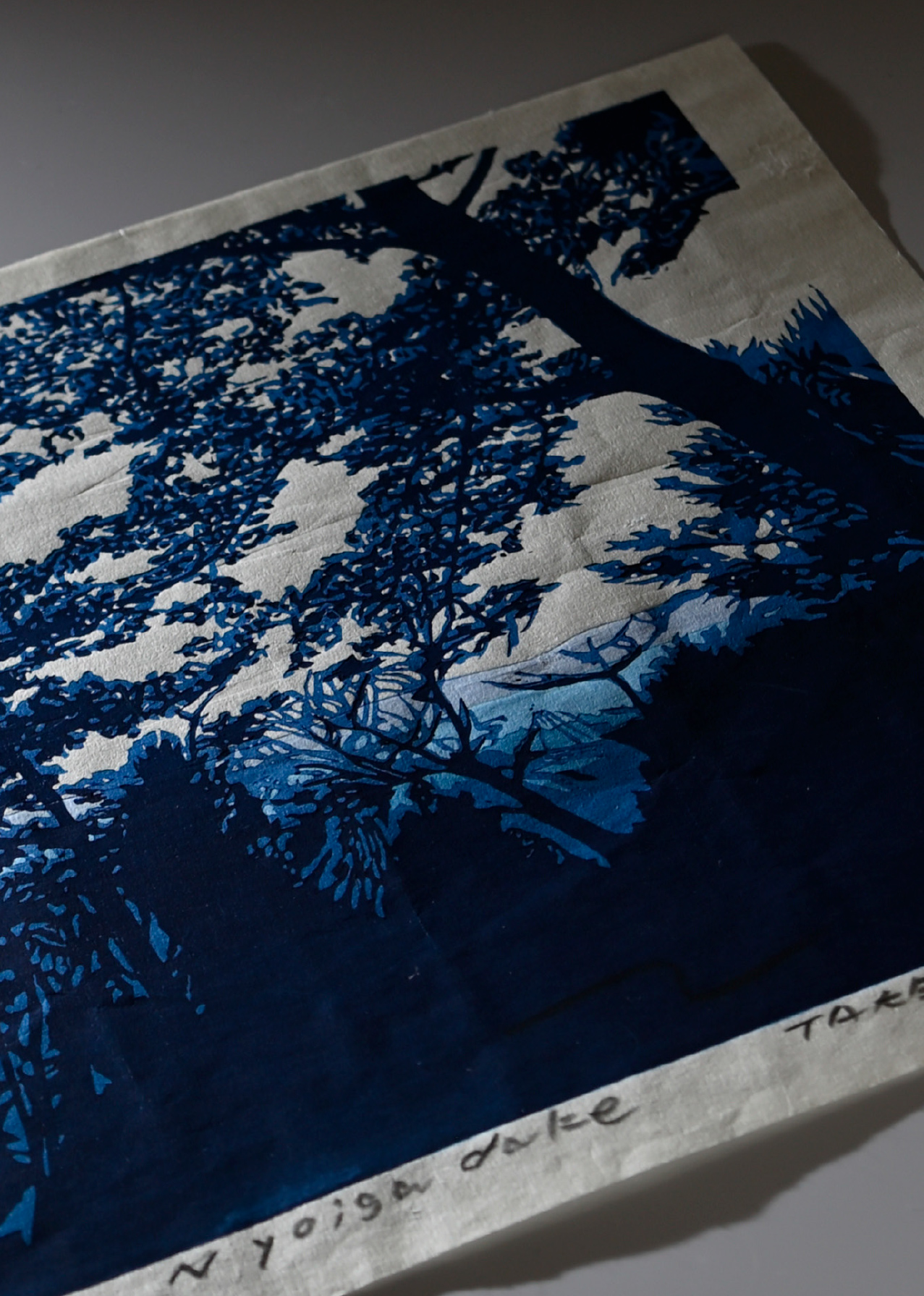 2
2
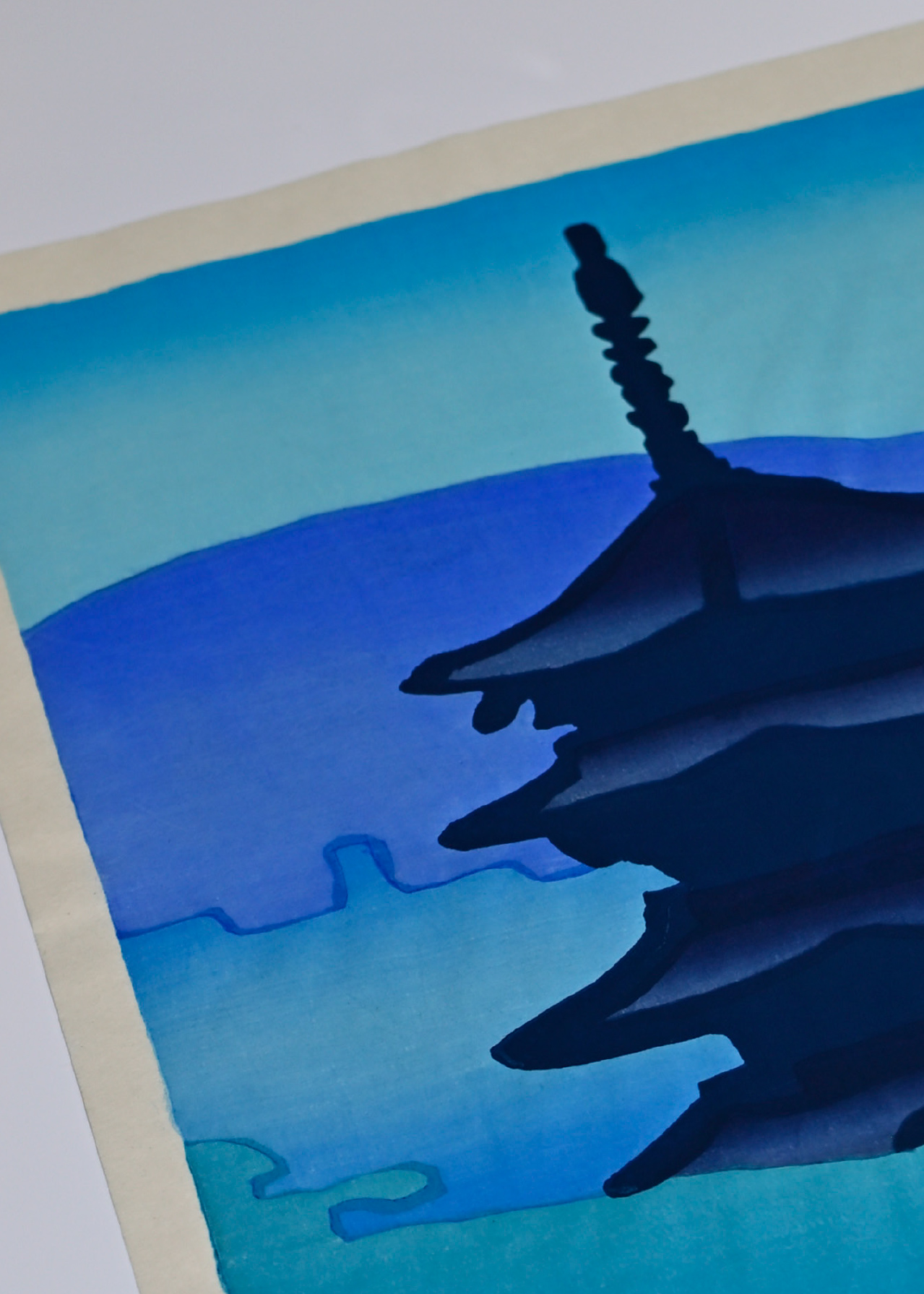 3
3
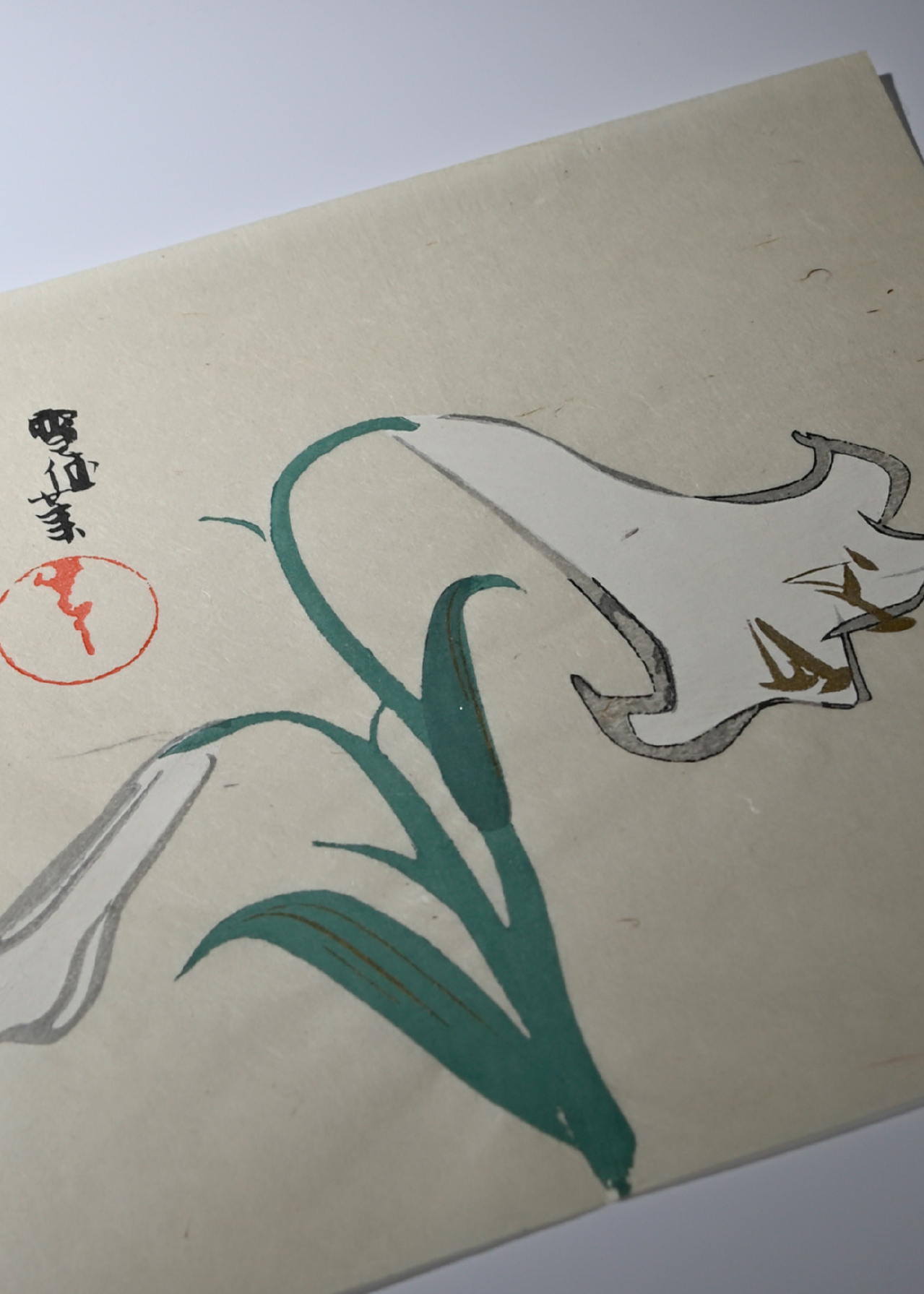 4
4
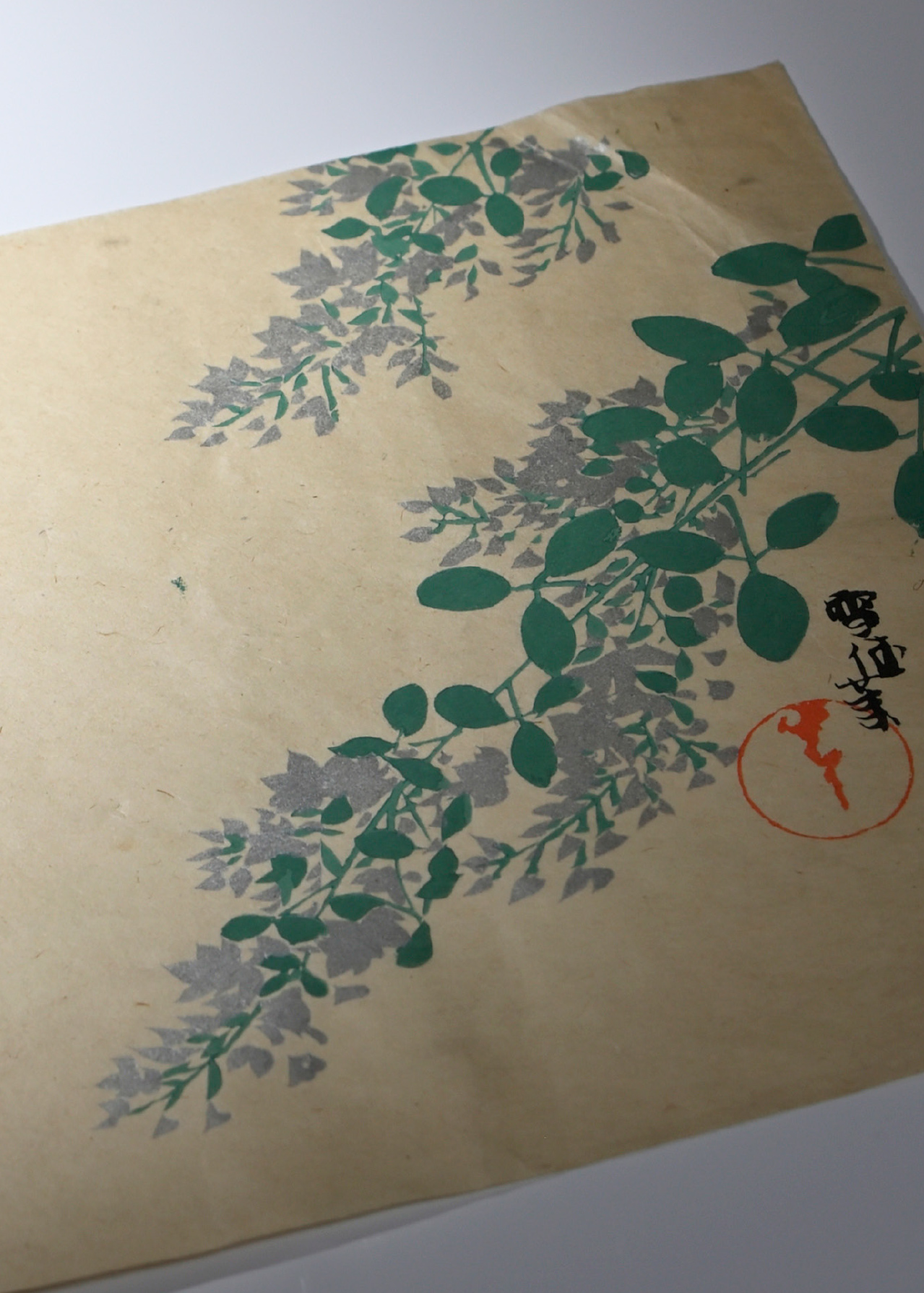 5
5
- : 竹中健司「Nyoigatake」。
- : 竹中健司「東寺」。
- : 明治時代から昭和初期にかけて京都で活躍した画家、神坂雪佳「百合」。
- : 神坂雪佳「萩」。
(1,2,3,4,5 すべて有限会社竹笹堂 ※4,5の作品の版木は「京うちわ阿以波」に伝わるもの。摺りは竹笹堂による。)
1: Junko by Kenji Takenaka. 2: Nyoigatake by Kenji Takenaka 3: Toji by Kenji Takenaka 4: Yuri by Sekka Kamisaka, a painter who was active in Kyoto from the Meiji to the early Showa era. 5: Hagi by Sekka Kamisaka. (1,2,3,4,5 Takezasado. The woodblocks 4,5 are transmitted to "Kyo Uchiwa Aiba". Printed by Takezasado.)

